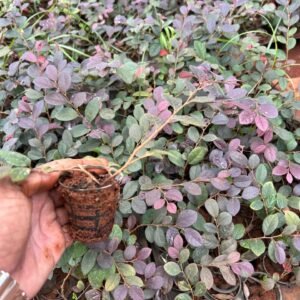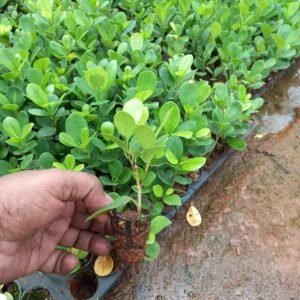The American Hibiscus (Hibiscus rosa-sinensis) is a striking and vibrant plant known for its large, showy flowers and glossy foliage. This plant, commonly referred to simply as hibiscus, is native to tropical and subtropical regions and is a favorite for adding bold color and tropical flair to gardens and landscapes.
Appearance
American Hibiscus is celebrated for its stunning flowers, which come in a variety of colors, including red, pink, yellow, white, and orange. Each flower is large, often measuring 4 to 6 inches across, and has a distinctive funnel or trumpet shape with five or more petals. The flowers have a soft, delicate texture and often feature a darker center or throat, adding to their visual appeal.
The plant itself is a woody shrub or small tree, typically growing to heights of 4 to 10 feet, depending on the variety and growing conditions. Its leaves are glossy, dark green, and have a slightly serrated edge. The foliage provides a lush, evergreen backdrop that complements the vibrant flowers. The plant has a dense, bushy growth habit, making it an excellent choice for creating privacy screens, hedges, or as a standalone ornamental feature.
Care and Maintenance
American Hibiscus thrives in warm, sunny environments, making it well-suited for tropical and subtropical gardens. It prefers full sun to partial shade and needs well-drained soil to flourish. While the plant is fairly drought-tolerant once established, it benefits from regular watering, especially during dry periods. It is important to avoid waterlogging, which can lead to root rot.
The plant also benefits from regular feeding. A balanced, slow-release fertilizer applied every few months during the growing season will help promote vigorous growth and abundant flowering. Pruning is also important to maintain the plant’s shape and encourage new growth. Light pruning after the main flowering period will help the plant stay tidy and produce more blooms.
Uses and Benefits
American Hibiscus is not only valued for its ornamental beauty but also for its versatility. In many tropical regions, hibiscus flowers are used in cooking and beverages. The flowers can be dried and used to make hibiscus tea, which is known for its tart flavor and high antioxidant content. This tea is enjoyed both hot and iced and is often praised for its potential health benefits, including lowering blood pressure and supporting heart health.
In addition to its culinary uses, hibiscus has applications in traditional medicine. Various parts of the plant, including the flowers, leaves, and stems, have been used in folk medicine for their anti-inflammatory and antimicrobial properties. Some cultures also use hibiscus in skincare products, thanks to its natural acids that can help exfoliate and rejuvenate the skin.
Symbolism
The American Hibiscus symbolizes beauty, grace, and strength. Its vibrant flowers represent tropical splendor and are often associated with warmth and positivity. In many cultures, hibiscus is seen as a symbol of the delicate yet resilient nature of life, making it a popular choice for both personal and decorative use.






Reviews
There are no reviews yet.